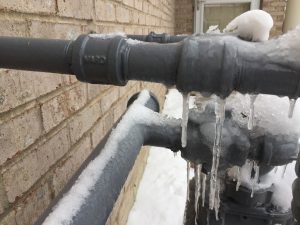Preventing Frozen Pipes in Cold Weather: Pro Advice
Preventing Frozen Pipes in Cold Weather: Pro Advice
Blog Article
What're your ideas with regards to Preventing and dealing with frozen pipes?

Cold weather can wreak havoc on your pipes, particularly by freezing pipelines. Below's exactly how to avoid it from taking place and what to do if it does.
Intro
As temperature levels decline, the danger of icy pipelines boosts, potentially causing expensive repairs and water damages. Comprehending exactly how to stop icy pipelines is vital for property owners in chilly climates.
Understanding Icy Pipes
What causes pipes to ice up?
Pipelines ice up when revealed to temperatures below 32 ° F (0 ° C) for prolonged durations. As water inside the pipelines ices up, it increases, taxing the pipeline walls and possibly creating them to burst.
Dangers and problems
Icy pipes can cause water supply interruptions, residential or commercial property damages, and pricey fixings. Burst pipes can flood homes and cause comprehensive structural damage.
Indications of Frozen Water Lines
Determining frozen pipes early can prevent them from bursting.
Exactly how to recognize frozen pipelines
Look for lowered water circulation from faucets, unusual smells or sounds from pipelines, and visible frost on exposed pipes.
Avoidance Tips
Shielding prone pipes
Wrap pipelines in insulation sleeves or utilize heat tape to protect them from freezing temperature levels. Focus on pipes in unheated or external areas of the home.
Heating strategies
Keep indoor areas properly warmed, specifically areas with pipes. Open closet doors to enable cozy air to distribute around pipelines under sinks.
Safeguarding Exterior Plumbing
Yard hose pipes and outdoor faucets
Separate and drain pipes garden pipes prior to wintertime. Mount frost-proof spigots or cover outside faucets with insulated caps.
What to Do If Your Pipes Freeze
Immediate activities to take
If you believe icy pipes, keep taps open up to ease pressure as the ice melts. Utilize a hairdryer or towels soaked in hot water to thaw pipes gradually.
Long-Term Solutions
Architectural modifications
Think about rerouting pipes away from outside wall surfaces or unheated areas. Include added insulation to attics, basements, and crawl spaces.
Updating insulation
Purchase top quality insulation for pipelines, attic rooms, and walls. Correct insulation assists keep constant temperatures and lowers the danger of icy pipes.
Verdict
Stopping icy pipes calls for proactive procedures and quick reactions. By recognizing the causes, indications, and safety nets, homeowners can secure their pipes throughout cold weather.
5 Ways to Prevent Frozen Pipes
Drain Outdoor Faucets and Disconnect Hoses
First, close the shut-off valve that controls the flow of water in the pipe to your outdoor faucet. Then, head outside to disconnect and drain your hose and open the outdoor faucet to allow the water to completely drain out of the line. Turn off the faucet when done. Finally, head back to the shut-off valve and drain the remaining water inside the pipe into a bucket or container. Additionally, if you have a home irrigation system, you should consider hiring an expert to clear the system of water each year.
Insulate Pipes
One of the best and most cost-effective methods for preventing frozen water pipes is to wrap your pipes with insulation. This is especially important for areas in your home that aren’t exposed to heat, such as an attic. We suggest using foam sleeves, which can typically be found at your local hardware store.
Keep Heat Running at 65
Your pipes are located inside your walls, and the temperature there is much colder than the rest of the house. To prevent your pipes from freezing, The Insurance Information Institute suggests that you keep your home heated to at least 65 degrees, even when traveling. You may want to invest in smart devices that can keep an eye on the temperature in your home while you’re away.
Leave Water Dripping
Moving water — even a small trickle — can prevent ice from forming inside your pipes. When freezing temps are imminent, start a drip of water from all faucets that serve exposed pipes. Leaving a few faucets running will also help relieve pressure inside the pipes and help prevent a rupture if the water inside freezes.
Open Cupboard Doors
Warm your kitchen and bathroom pipes by opening cupboards and vanities. You should also leave your interior doors ajar to help warm air circulate evenly throughout your home.

I found that entry about How to Prevent Your Pipes From Freezing when doing a lookup on the web. Sharing is good. You won't know, you will be helping someone out. Thanks for being here. Revisit us soon.
Customer Reviews Report this page